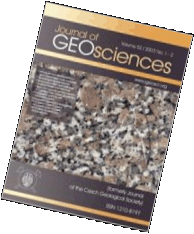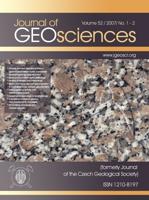 Export to Mendeley
Export to MendeleyOriginal Paper
Petrology and geochemistry of the Tertiary alkaline intrusive rocks at Doupov, Doupovské hory Volcanic Complex (NW Bohemian Massif)
Journal of Geosciences, volume 55 (2010), issue 3, 251 - 278
DOI: http://doi.org/10.3190/jgeosci.074
Field observations, petrography, geochemical data and the results of K-Ar dating are presented for Oligocene (c. 30-29 Ma) alkaline intrusions at the former township of Doupov (Duppau) in the central part of the Doupovské hory Volcanic Complex (DHVC).
The Doupov Intrusive Complex (DIC) is a very limited in outcrop (< 2 km2) but is petrographically highly variable. Several phaneritic rock types have been identified, including clinopyroxenite (both the clinopyroxenite-dominated breccia and xenoliths in younger intrusive phases), essexite, sodalite-bearing monzodiorite, sodalite monzosyenite to nepheline-sodalite syenite, and highly mafic to felsic nephelinolites (melteigite-ijolite-urtite). These rocks are accompanied by vent breccias, and a thermal and metasomatic aureole with zones of pervasive phlogopitization. Phaneritic intrusions and their host rocks are cut by thin aphanitic dykes ranging from mafic alkaline lamprophyres to felsic trachytes and phonolites. All the intrusions are characterized by undersaturated alkaline compositions with high abundances of incompatible elements.
Geochemical variations and also subtle differences in the isotopic compositions of Sr and Nd suggest that the less undersaturated essexitic rocks and sodalite syenitoids do not form a common evolutionary line with highly undersaturated nephelinolites. Nephelinolites are isotopically close to the ”European Asthenospheric Reservoir“ or the ”Common Mantle Reservoir“ compositions and interaction of their parental magmas with the continental crust was negligible. Magmatic evolution of nephelinolites with ”dry“ mineral assemblages was dominated by fractionation of clinopyroxene accompanied, at the early stage by olivine, and later by titanite, magnetite and apatite. Essexite is isotopically more different though still within the field of mafic lavas from DHVC and other volcanic complexes in Central and Western Europe. Either its parental magma originated in heterogeneous mantle with more distinct lithospheric signature or this magma reacted with the continental crust during its ascent and fractionation. Sodalite monzosyenite displays significantly higher 87Sr/86Sr ratios and its magma probably interacted even more intensively with the crustal rocks.
The K-Ar ages of phaneritic intrusive rocks from Doupov are c. 30-29 Ma. Intrusions are older than the tephrite-basanite and foidite lavas forming the upper parts of the DHVC.
The rock association resembles that accompanying many carbonatite intrusions around the world. However, brecciation and high-temperature metasomatic overprint including the extensive phlogopitization may be related to ijolitic magma. Nevertheless, the presence of carbonatite at some deeper level cannot be excluded.
Webdesign inspired by aTeo. Hosted at the server of the Institute of Petrology and Structural Geology, Charles University, Prague.
ISSN: 1803-1943 (online), 1802-6222 (print)
email: jgeosci(at)jgeosci.org


IF (WoS, 2024): 1.3
5 YEAR IF (WoS, 2024): 1.4
Policy: Open Access
ISSN: 1802-6222
E-ISSN: 1803-1943